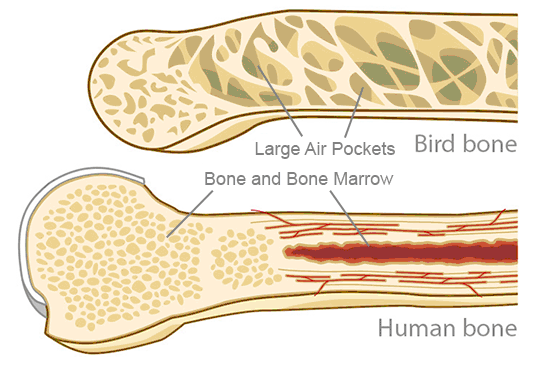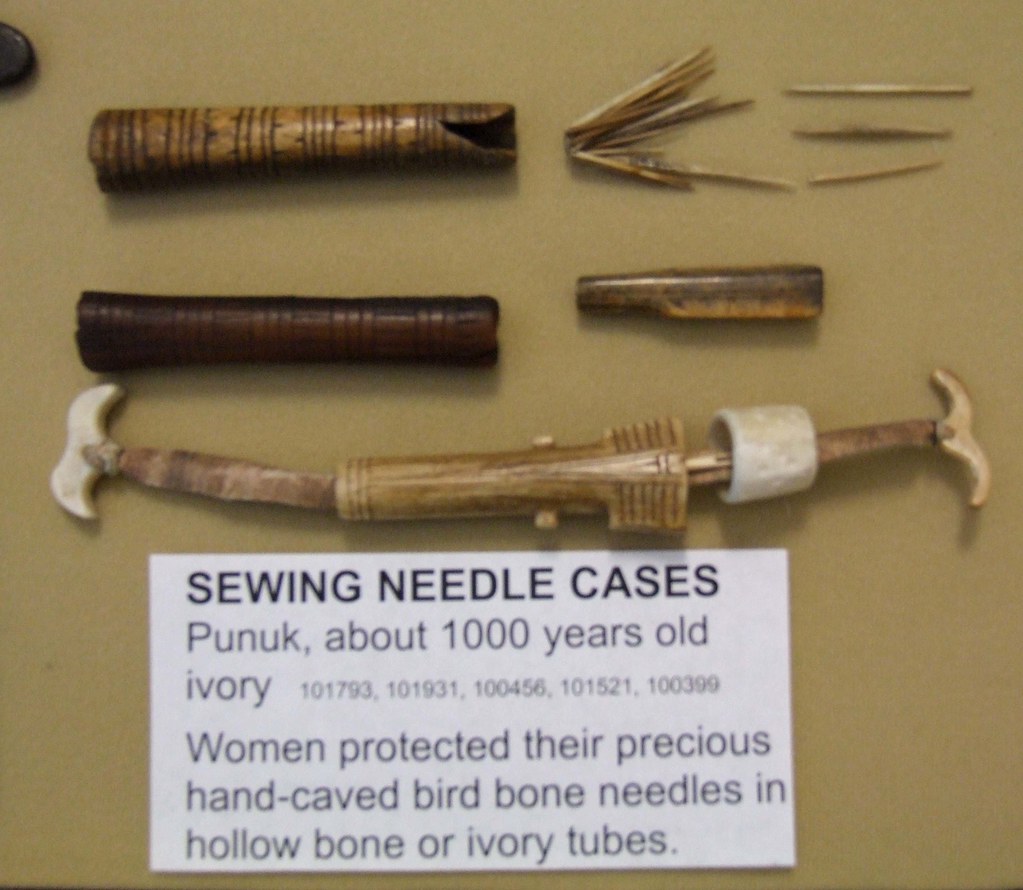One of the most notable characteristics of birds is their lightweight skeletal systems. Even though most bird bones are thin-walled and hollow relative to mammal bones, the wall of the bone itself is quite dense and the internal struts deter breaking. Some recent research tells us something that we had not known before: bigger birds actually have hollower (more air-filled) and thinner bones. The heavier birds need to lose as much weight as they can to enable flight; smaller birds have thicker and less hollow bones. The exceptions are diving birds like loons and diving ducks which need to reduce buoyancy when they dive.

Because of their strength and varied construction, bird bones were highly prized in the past as raw material for making tools since bird bones can be cut and ground and shaped into a wide variety of tools, musical instruments, and jewelry.
Scientists in Israel have discovered seven 12,000-year-old flutes, according to a study in the journal Scientific Reports. Made from the wing bones of Eurasian Teal and Eurasian Coot, they were apparently designed to imitate the calls of birds of prey, presuming to lure them in for capture. The flutes were painted and worn around the neck of the user. The perforated bones were found in Israel’s Hula Valley, just west of the Golan Heights. There are even older flute fragments; those found in Geissenklösterle, Germany are estimated to be around 35,000 years old. A Hohle Fels (Germany) flute is made from the hollow wing bone of a Griffon Vulture. That one is thought to date back only 4,000 years. Another fascinating discovery was also made recently in the French city of Isturitz. There, ancient flutes made from swan wing bones were found and believed to be around 30,000 years old.

Bird bones from Wild Turkeys were used by Native Americans 3000 years ago, apparently as tattoo needles (Science News). Various species of geese and the Black-footed Albatross in Alaska have been used to make bone tool handles, needles, and awls by the natives in the Bering Strait region. Bones of Sandhill Cranes, grouse, waterfowl, and ravens were made into “beads” for necklaces; imitations are sold today on Amazon.
A tradition of shooting Common Loons for food and for fishing lures was established on Shackleford Banks, North Carolina, by the mid-19th century. The practice probably arose because, on the east/west-tending Shackleford Banks, loons migrating northward in spring flew sufficiently low over land to be within shotgun range. In addition to making loon stew, the shooters made sections of the long bones into fishing lures by running a hook through them. Since loon bones are solid and heavy and white, they made nice lures for casting for bluefish. Fishing was of course important to American colonists. Fish on the east coast were angled for with minnows, worms and insects attached to small hooks fashioned from bird bones.
Come Thanksgiving, see what useful item you can make of the carcass.
Fascinating. Thank you. I have a question: does the shape of the curlew’s bill contribute to the beautiful sounds it makes?
Pingback: Bird Bones as Tools – Ornithology - Vetezi